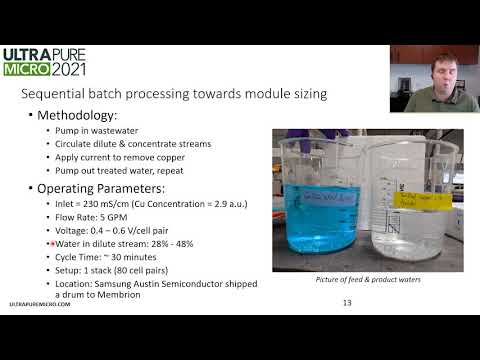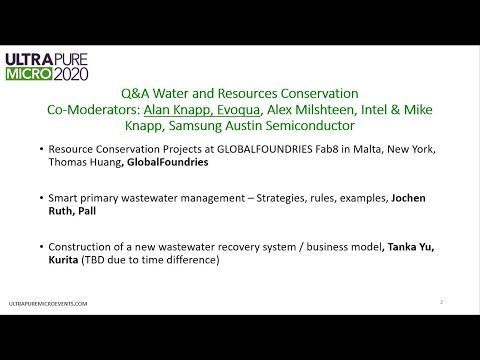
Greg Newbloom
Chief Executive Officer & Founder
Membrion
Collaborators
Tags
Water ConservationSustainabilityAddressing water circularity in the microelectronics industry
Share this insight
Climate-driven water scarcity is causing the microelectronics industry to get serious about water reuse. Look no further than SEMICON West where >50% of the invited “Start-ups for Sustainability” were water circularity focused.
It’s widely documented that a fab can consume 2 – 10 million gallons of water per day, which is equivalent to the water consumption of 50,000 – 170,000 people. Semiconductor facilities often see the opportunity to be more sustainable but hesitate to act. Understanding the hesitation requires understanding of the “Semiconductor Water Cycle”.
Fabs typically take (1) relatively clean city or well water into a (2) ultrapure water (UPW) system that produces essentially pure water into (3) production that combines the water with extremely harsh chemicals and then to a (4) wastewater treatment process before (5) being discharged or, ideally, reused. Step 3 generates some truly nasty wastewaters. Metal-laden, fluoride-containing, acidic, oxidizing, scaling, fouling – they are among the hardest to treat. Combine that with the reality of Step 2, a UPW system that is extremely sensitive and the heart of the economic engine for a fab - talk about a risk mismatch.
A wise person once said that any stream can be treated to any standard with enough pre-treatment, but that leads to monumental costs for taking Step 5 back to the purity of Step 1. However, it’s important to realize that the risks cut both ways. 95% of the western United States is experiencing drought with some regions in a “megadrought”. Some states are asking for voluntary cuts to individual water use – what happens if that trickles down to a fab? What’s the monetary impact to a fab that has 15% less water?
Water should be on the radar as a supply chain risk. Luckily, there are low-risk steps that can be taken now to improve water circularity and reduce supply chain risks. Try out some of the new technologies that can treat these extreme wastewaters more efficiently. Then use that treated wastewater in ancillary operations (e.g., cooling towers) or blended in small quantities into the UPW feed. The sooner these activities start, the more prepared a facility will be to address climate-driven water scarcity without impacting fab operations.
Share this insight
Related insights
Q&A Results with ElectraMet: Copper recovery from CuCMP Wastewater

Cameron Lippert
Electramet
The Rising Tide of CEDI: Why it is Outshining Traditional Ion Exchange in High-Purity Applications (Part 2)

Orla McCoy
Global Water Intelligence
The Rising Tide of CEDI: Why it is Outshining Traditional Ion Exchange in High-Purity Applications (Part 1)

Orla McCoy
Global Water Intelligence
Related resources

Electrodialysis reversal enhanced by ceramic membranes for recycling of copper wastewater
Environmental Sustainability - Opening Panel
